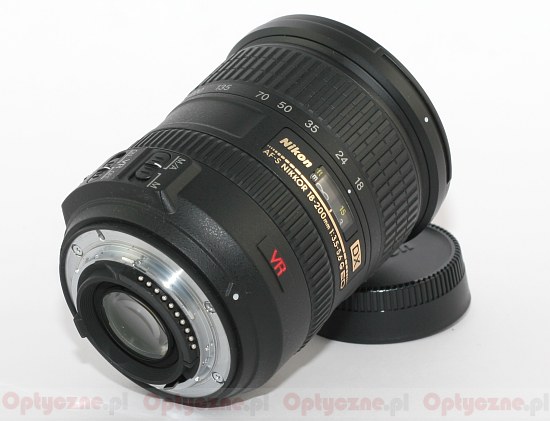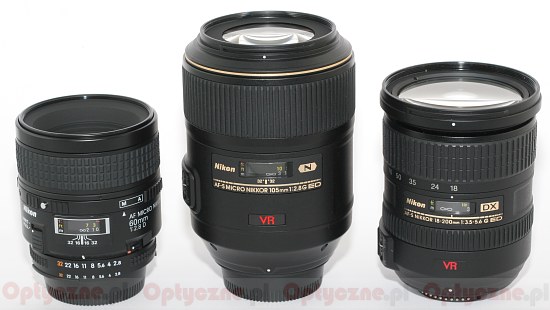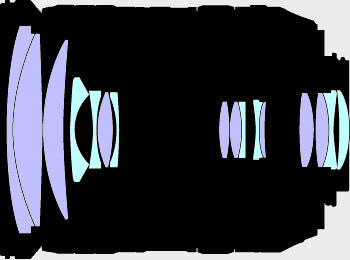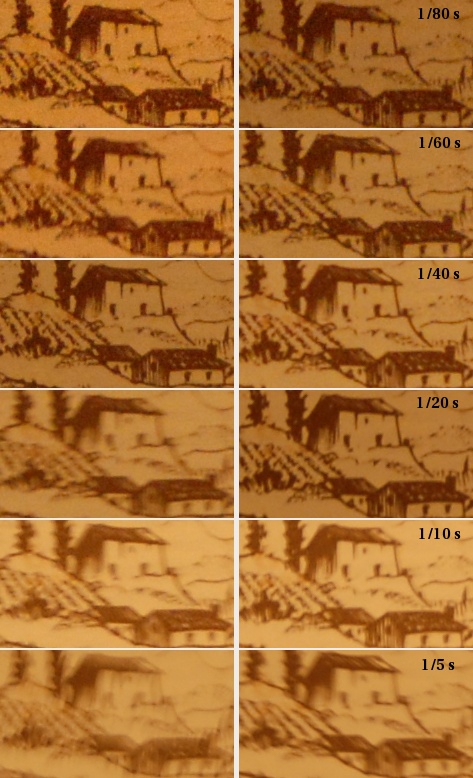Nikon Nikkor AF-S DX 18-200 mm f/3.5-5.6G IF-ED VR
3. Build quality and image stabilization

The lens is heavy. The reason is not only its picture stabilization and autofocus motor (SWM) but also the metal elements of the body and bayonet. As far as size is concerned, it is just right. When you look at the lens for the first time and have in mind its focal length range, you don't want to shout, as in the case of the Tamron 18-200 mm case, when you want to scream "this is small!" On the other hand, the lens is not very large, especially when folded. When you connect it with a D200 and wear it on your neck, it is relatively comfortable. Of course, we can feel that it is heavier than a regular kit lens, but you can get used to it. The picture below shows a comparison with the two Nikkor Makros - 2.8/105 and 2.8/60.
Please Support UsIf you enjoy our reviews and articles, and you want us to continue our work please, support our website by donating through PayPal. The funds are going to be used for paying our editorial team, renting servers, and equipping our testing studio; only that way we will be able to continue providing you interesting content for free. |
- - - - - - - - - - - - - - - - - - - - - - - - - - - - - - - - - - - - - - - - - - - - - - - -

The Nikon however did make a mistake that is quite common for universal zooms, whose focal lengths start from 18 mm. It is a manual sharpness adjustment ring. The ring is not very comfortable (it is a bit too narrow) and its performance is imperfect. It is a bit loose, so even when delicately touched it moves and we have no idea if the sharpness has been changed or if this is just loose ring. You simply never know...
On the other hand, when we set up the focal length for 200 mm, the front set of lenses moves on the telescope barrel, whose built-in quality is much higher than in the Nikkor 18-135 mm.
The construction with such a large focal length range, equipped with picture stabilization, is not an easy one. In the lens's inner construction there are 16 elements set up in 12 groups. Two of the lenses are made of ED low dispersion glass and three of them have an aspheric shape. Inside there is also a seven blade diaphragm and a 72 mm filter thread at the front end.

Image stabilization
The manufacturer claims that the Nikkor 18-200 mm is equipped with the newest generation picture stabilization (VR II), which allows picture taking with 4deg longer exposure times as opposed to the previous VR version, with a 3deg longer exposure time. The real life results can be observed below, where you can compare the pictures (clipping 1:1 from our test chart) taken with the 70 mm focal length and on and off picture stabilization. Without a doubt, the tested Nikkor can obtain 8x longer times than the times it has to use for taking pictures without stabilization. The efficiency of the VR mechanism can be rated at a 3 EV. Could that be 4 as the manufacturer claims? In very good conditions - yes, but not always. If you want to be sure to get steady pictures you are advised to use a margin of error and an 8X longer than those without stabilization.







